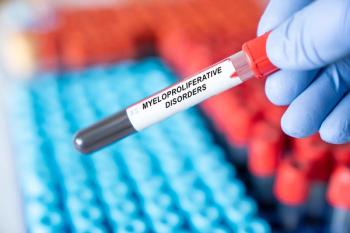
Dry Eye Awareness Month Highlights Condition Affecting Millions
Key Takeaways
- DED diagnosis rates are rising due to increased awareness and screen usage, affecting the tear film and causing symptoms like itching and blurred vision.
- Meibomian gland dysfunction is a primary cause of DED, affecting 86% of patients, with treatments like perfluorohexyloctane ophthalmic solution targeting this dysfunction.
Dry eye affects up to 16 million people in the US, and new treatments aim to mitigate the symptoms that can disrupt quality of life in these patients.
DED primarily affects the tear film of the eye,1 with any disruption to the tear film causing watering, itching, blurred vision, or burning sensations. Although each reason for DED is different, most cases of DED have to do with the eyes not producing enough tears or tears that evaporate too quickly, with some cases having both of these root causes. Aqueous deficient dry eye occurs when the lacrimal glands do not produce enough tears, whereas evaporative dry eye is linked to meibomian gland dysfunction causing the evaporation of the tears. To formally diagnose DED, ophthalmologists and optometrists may use the tear breakup time test, which tests how quickly tears evaporate, or the slit lamp test, which shines a light into the eye to examine the eyes and eyelids.
Meibomian gland dysfunction accounts for 86% of those who have DED, according to Johnson & Johnson,2 making it a primary focus for treating DED, which primarily effects those 50 years and older. DED overall can be difficult to treat due to why dry eye presents itself. However, meibomian gland dysfuction does have a means of being addressed due to advances in care.
Perfluorohexyloctane ophthalmic solution (Meibo; Bausch & Laumb) has been approved by the FDA for use in dry eye associated with meibomian gland dysfunction.3 The twice-daily drop has been found to decrease the dryness of the eye when used regularly, as it prevents evaporation and stabilizes tears. Although this is the only treatment to specifically target meibomian gland dysfunction, there are other means of addressing chronic dry eye.
Treatments for chronic dry eye include lacrifill, 0.05% cyclosporine ophthalmic emulsion, 0.09% cyclosporine, 0.1% cyclosporine ophthalmic solution, lifitegrast, and varenicline. Lacrifill works through the injection of a hyaluronic acid-based gel into the tear duct so that natural tears are kept in the eye. The 0.05% cyclosporine ophthalmic emulsion and 0.09% cyclosporine were both created to target the inflammation of the eye through drops twice per day in each eye, although it can take 3 to 6 months before it starts to work. The 0.1% cyclosporine ophthalmic solution, by contrast, aims to increase tear production in the eye using the same active ingredient as the previous 2 medications but with a higher concentration and with a different delivery. Varenicline is a nasal spray that can be used to stimulate the production of mucin, oil, and tears, and it provides an alternative to those who would rather avoid eye drops.
Not only are there already treatments for DED that patients can use, there are also several treatments in development that may help to pinpoint the root causes of DED and address those areas of concern.3 An ointment produced by Azura Ophthalmics is currently being tested as a means of preventing the buildup of proteins in the meibomian gland ducts, which could produce healthier amounts of oil. Alcon is currently developing a drug, Acoltremon, that targets nerve cells in the cornea and eyelid to produce a cooling sensation that produces more tears. Both of these treatments have seen positive results in early trials.
As Dry Eye Awareness Month begins, it is important to be aware of the symptoms of dry eye so that they can be easily identified for those who may be living with DED without having a proper diagnosis. Speaking with an ophthalmologist or optometrist about any experienced symptoms can help the health care provider diagnosis the type of DED the patient has and recommend means of treating the condition that can improve overall quality of life.
References
1. Dry eyes. Cleveland Clinic. Updated June 20, 2025. Accessed July 7, 2025.
2. McCarthy LF. By the numbers: understanding dry eye disease. Johnson & Johnson. July 18, 2024. Accessed July 7, 2025.
3. Mukamal R. Improved dry eye drugs for 2025 and beyond. American Academy of Ophthalmology. January 24, 2025. Accessed July 7, 2025.
Newsletter
Stay ahead of policy, cost, and value—subscribe to AJMC for expert insights at the intersection of clinical care and health economics.













































